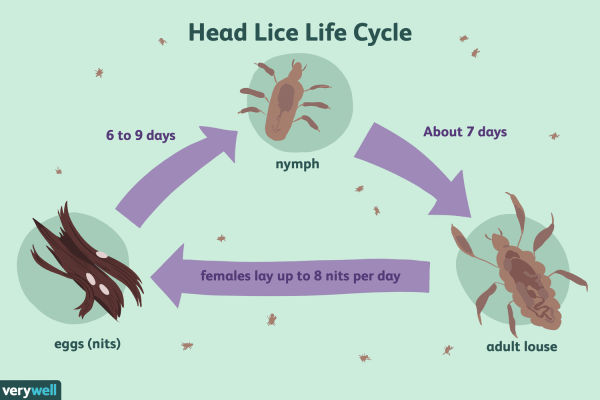| Head lice can be a pesky problem, especially when it comes to your little one. To ensure your baby stays lice-free, it's crucial to establish preventive measures. Start by educating siblings about the importance of not sharing personal items like combs, brushes, towels, or hats with each other or friends. By instilling this habit, you create a barrier that reduces the risk of lice transmission within the family. 
If your baby attends childcare and there has been a lice infestation, take proactive steps. Equip your little one with their own lice-free infant seat, bedding, and other personal items. This precautionary measure minimizes the chances of lice hitching a ride home. Regular scalp checks are essential. By inspecting your baby's scalp frequently, you can promptly identify and address any potential lice infestations. Early detection allows for quicker and more effective treatment, preventing the problem from escalating. Incorporating these simple yet effective practices into your routine can significantly reduce the likelihood of your baby getting head lice again. Stay vigilant, communicate preventive measures to the entire family, and enjoy a lice-free environment for your precious little one. 
Preventing recurring head lice infestations in babies requires vigilance and a multi-pronged approach. Because babies are particularly vulnerable, it's crucial to act quickly and effectively. Here's how:
1. Regular Checking: - Frequent Inspections: Check your baby's hair at least once a week, even if there's no suspected infestation. Part the hair in small sections to thoroughly examine the scalp and hair shafts. Pay close attention behind the ears and at the nape of the neck, common areas for lice to hide.
- Use a Fine-Toothed Comb: A nit comb can help detect lice and nits (lice eggs) that are difficult to see with the naked eye. Wet the hair to make combing more effective.
2. Prevention Strategies: - Avoid Head-to-Head Contact: Discourage your baby from close head-to-head contact with other children, especially if there are known infestations in their daycare or school.
- Don't Share Personal Items: Ensure your baby doesn't share hats, scarves, combs, brushes, hair accessories, or headphones with other children.
- Wash Bedding and Clothing Frequently: Wash all bedding, clothing, and stuffed animals in hot water (at least 130°F) and dry them on high heat for at least 20 minutes to kill any lingering lice or nits.
- Vacuum Regularly: Vacuum carpets, rugs, and furniture regularly to remove any stray lice or nits that may have fallen off.
- Hair Care: While long hair can make lice infestations easier, short hair isn't a guarantee of prevention. Keep hair clean and well-maintained. Avoid using products that claim to repel lice; their effectiveness isn't scientifically proven.
3. Treatment (If Infestation Occurs): - Consult a Pediatrician: Immediately consult your pediatrician if you suspect a head lice infestation. They can advise on the safest and most effective treatment options for your baby. Never use over-the-counter treatments without consulting your doctor first, as some contain chemicals that may be harmful to infants.
- Follow Treatment Instructions Carefully: If prescribed medication, follow the instructions precisely. This includes how often to apply the treatment and how long to leave it on.
- Retreatment: A single treatment may not always eliminate all lice and nits. Your pediatrician will advise on whether retreatment is necessary.
4. Prevention after Treatment: - Continue Regular Checks: Even after successful treatment, continue regular checks for several weeks to ensure the infestation is completely eradicated.
- Maintain Hygiene Practices: Continue practicing the preventative measures outlined above to minimize the risk of re-infestation.
Remember, prevention is key. By consistently following these steps, you significantly reduce the chances of recurring head lice in your baby. If you have any concerns, always seek professional advice from your pediatrician.
Tags: Head Lice Lice Lice Eggs Preventing Head Lice 머릿니  
|  1,246
1,246  0
0  0
0  3224
3224 
